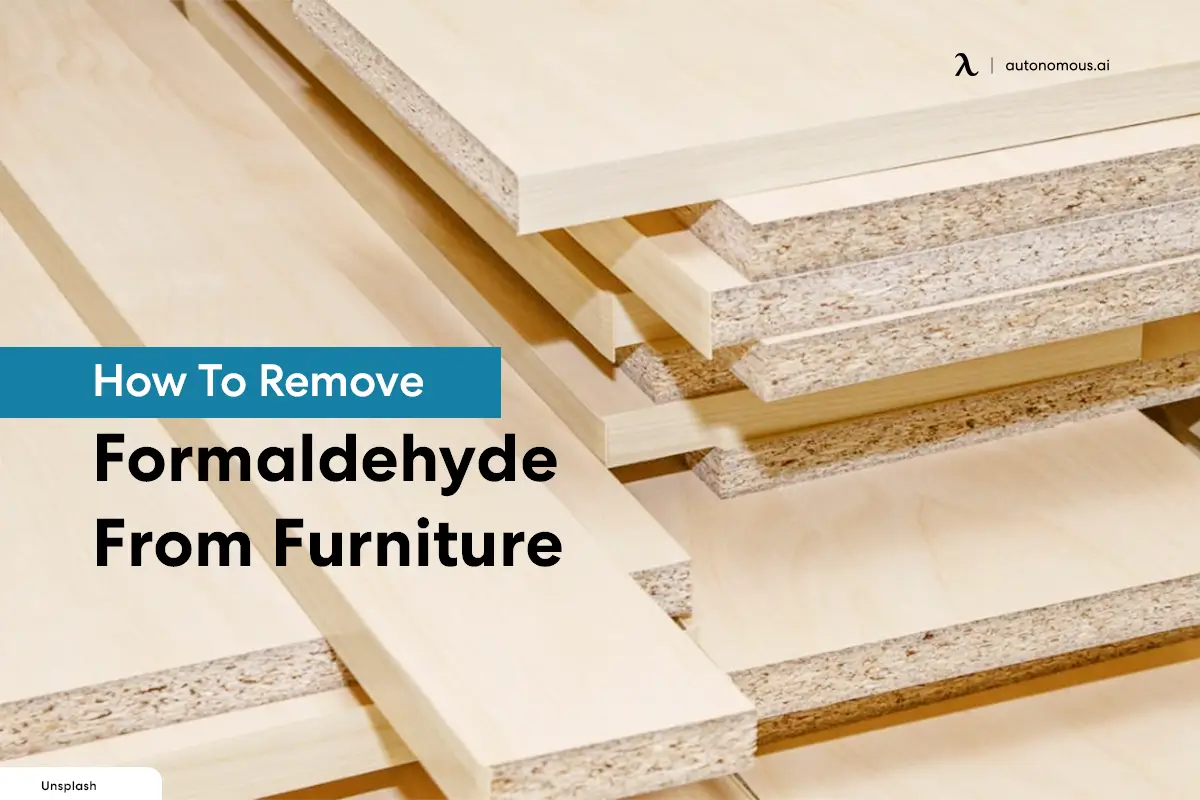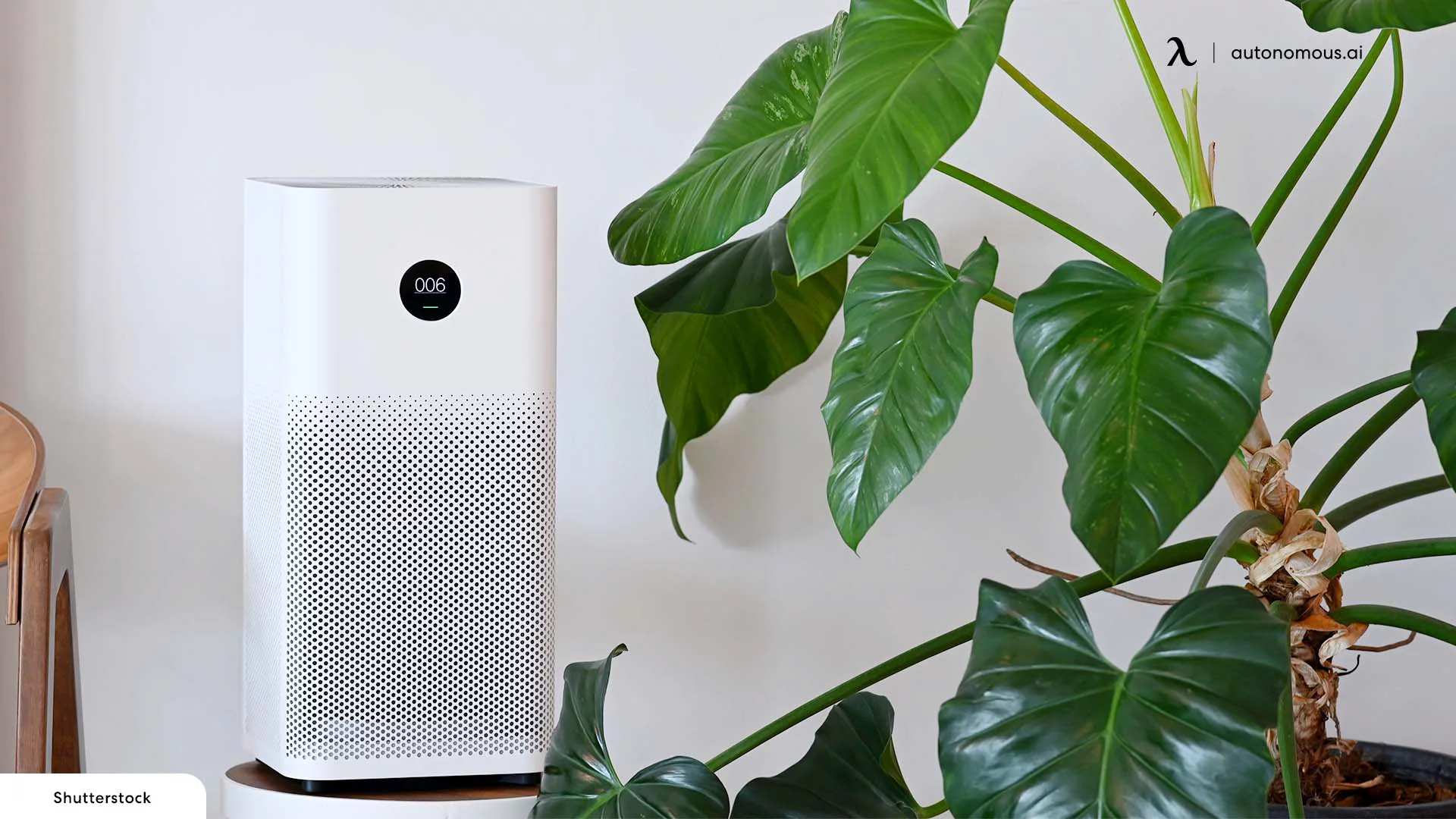
Table of Contents
Perhaps you're wondering what role formaldehyde plays in the furniture you get for your house or a prefab accessory dwelling unit. If you've ever unwrapped a brand new piece of furniture (sofa, cupboards, bed frames, nightstands, bedside tables, etc.) and noticed an overpowering chemical odor, formaldehyde from furniture is likely to blame.
What is Formaldehyde?
Formaldehyde is a carbon, oxygen, and hydrogen compound. Its most common use is in the production of adhesives and coatings for consumer items, and it has a strong, distinctive odor. Because of the potential dangers associated with formaldehyde from furniture, it is essential to ensure that no one in the house or your prefab studio shed is exposed to the gas during the off-gassing phase as it is a major formaldehyde furniture warning for health. Read this guide to have formaldehyde-free furniture.
Why is Formaldehyde Used in Furniture?
Formaldehyde-based resins are favored in furniture manufacturing due to their:
- Adhesive Properties: Formaldehyde is a key ingredient in glues and adhesives that bond wood particles together, creating strong, durable composite materials.
- Cost-Effectiveness: These resins are cheaper than many alternatives, making them attractive for manufacturers looking to keep production costs low.
- Versatility: Formaldehyde resins are used in various finishes and coatings, enhancing the durability and appearance of furniture.
Health Risks Associated with Formaldehyde
Exposure to formaldehyde can pose several health risks, particularly through inhalation of its fumes. The severity of these risks depends on the concentration and duration of exposure. Common health effects include:
- Respiratory Issues: Exposure can irritate the respiratory system, causing symptoms like coughing, wheezing, and difficulty breathing.
- Eye and Skin Irritation: Formaldehyde can cause burning sensations in the eyes and irritation of the skin.
- Allergic Reactions: Some individuals may experience allergic reactions, including skin rashes and asthma-like symptoms.
- Cancer Risk: Long-term exposure to high levels of formaldehyde has been linked to certain types of cancer, such as nasopharyngeal cancer and leukemia.
How to Identify Formaldehyde in Furniture
- Check Labels and Certifications: Look for labels such as "low-VOC" or certifications like GREENGUARD, CARB (California Air Resources Board), and FSC (Forest Stewardship Council) which indicate lower formaldehyde emissions.
- Ask the Manufacturer: Inquire about the materials and adhesives used in the furniture.
- Smell Test: New furniture with a strong, chemical odor might contain formaldehyde.
How to Remove Formaldehyde From Furniture
Formaldehyde is a kind of volatile organic compound (VOC) often found in synthetic fabric and other common household items. Since it gives out a gas even while at room temperature, we classify it as volatile. More formaldehyde will off-gas into the space as its source heats up. If you or others around you are sensitive to chemicals, you may reduce your exposure by cleaning the upholstery as often as possible. The formaldehyde content of upholstery, particularly brand-new pieces, decreases significantly when exposed to air and time. These tips will help you have formaldehyde-free furniture.
The off-gassing process often follows the introduction of new items or furnishings into a house or your home office shed with a formaldehyde furniture warning. How can you speed up the elimination process of formaldehyde from furniture and reduce the risk of health problems associated with formaldehyde exposure in the home? Remove formaldehyde from your furniture by following the steps outlined below. Read more to learn how to remove formaldehyde from wood furniture.
1. Give It Room
As formaldehyde is often found in upholstery materials, particularly synthetics. Letting a new couch, table, or wood standing desk out in the air before using it will help remove some of the toxic odors. Put the pieces on a patio or other outside space where they may get some fresh air. When exposed to sunlight or hot, dry air, the chemical in the cloth off-gasses and is thus removed. Hence protecting the wood table from formaldehyde.
Just put the pieces outside for a day or two, or put them in a place with plenty of windows and fans to let the stuffy air out. As the plastic prevents the wood desktop from breathing, it also traps any lingering scents or chemicals that may be present.
2. Purifying the Air to Get Rid of Formaldehyde
One strategy to reduce the risk of inhaling formaldehyde is to use air purification systems. Activated carbon filtration is used in air purifiers because they trap and neutralize VOCs. Put an air purifier in any room that has furniture treated with formaldehyde.
Be sure you read the box before you buy an air purifier to make sure it gets rid of VOCs. Many common houseplants may purify the air by absorbing volatile organic compounds. The Hub reports that NASA research done by Dr. Bill Wolverton found that the Boston fern was more successful than hundreds of other plants in filtering out the chemical from the air.
3. Assistance in Humid Conditions
Formaldehyde off-gassing from your desk, tables, or wood desk shelf in a room is also affected by the humidity level; the higher the humidity, the greater the likelihood of off-gassing. According to EnviroKlenz, off-gassing is less likely when an air conditioner operates continuously or when the weather is warm and humid. A dehumidifier performs a similar function by sucking moisture out of the air in a room. Mold and mildew flourish in humid settings, so eliminating that environment by using a dehumidifier or air conditioner is another way to reduce their likelihood.
>>> Dehumidifier vs. Air Purifier?

4. Removal of Odors
If formaldehyde scents persist after cleaning, put baking soda on the furniture. For best results, leave the baking soda to stay on the cloth for at least an hour before vacuuming it up with clean air or HEPA filtered vacuum. Fabrics that have developed musty scents over time may be revived with this baking soda solution in place of harsh chemical detergents. This is how to remove formaldehyde from wood furniture.
5. White Vinegar
Place bowls of white vinegar around the room where the new furniture is located. Vinegar can help absorb the formaldehyde smell.
6. Charcoal
Activated charcoal can absorb formaldehyde. Place charcoal bags or bowls of charcoal near the furniture.
7. Houseplants
Certain houseplants, like spider plants, Boston ferns, and aloe vera, can help absorb formaldehyde from the air.
FAQs
Does formaldehyde exist in all furniture?
Formaldehyde is present in every piece of furniture. Newly produced wood items, such as flooring and furniture, have increased quantities of formaldehyde compared to their older counterparts.
How long does formaldehyde last in furniture?
There is evidence to show that the off-gassing of formaldehyde from freshly constructed furniture or renovated dwellings takes about two years. High relative humidity and temperature, however, might hasten the off-gassing of volatile organic compounds.
Is furniture with formaldehyde dangerous?
The amount of formaldehyde present is the key to understanding how it may have a dangerous reputation while yet being present in so many commonplace goods. Small levels of formaldehyde found in common household items do not constitute a significant health risk to the vast majority of persons who are exposed to them. Yet some with lower tolerance levels may find even these modest doses too much.
How to get rid of the formaldehyde smell in wood furniture?
Airing out the space and the furniture is the best technique to get rid of the formaldehyde smell from the furniture. Remove the chemical as well as the odor with volatile organic compounds.
Do all couches contain formaldehyde?
Not all couches contain formaldehyde, but many do, especially those made with composite wood products, adhesives, and certain fabrics treated with formaldehyde-based resins. To minimize exposure, look for couches made from solid wood frames, formaldehyde-free adhesives, and natural or organic fabrics.
Does all furniture contain formaldehyde?
Not all furniture contains formaldehyde. Furniture made from solid wood, formaldehyde-free materials, and low-VOC finishes typically does not contain formaldehyde. However, many pieces of furniture, particularly those made from particleboard, MDF, and plywood, may contain formaldehyde due to the adhesives and resins used in their manufacture.
Are there regulations limiting formaldehyde in furniture?
Yes, various regulations limit formaldehyde emissions in furniture. The California Air Resources Board (CARB) has stringent standards, and the U.S. Environmental Protection Agency (EPA) also regulates formaldehyde emissions. The European Union has its own standards for formaldehyde emissions.
Conclusion
Awareness of formaldehyde in furniture is crucial for making informed purchasing decisions that prioritize your health and well-being. By understanding the risks associated with formaldehyde exposure and opting for safer, low-emission products, you can create a healthier indoor environment. Always look for certified, eco-friendly options and consider investing in solid wood furniture or products made with formaldehyde-free materials.
Stay connected with us!
Subscribe to our weekly updates to stay in the loop about our latest innovations and community news!
Interested in a Link Placement?
.svg)



/https://storage.googleapis.com/s3-autonomous-upgrade-3/production/ecm/230914/bulk-order-sep-2023-720x1200-CTA-min.jpg)

/https://storage.googleapis.com/s3-autonomous-upgrade-3/static/upload/images/new_post_author/admin-1.png)